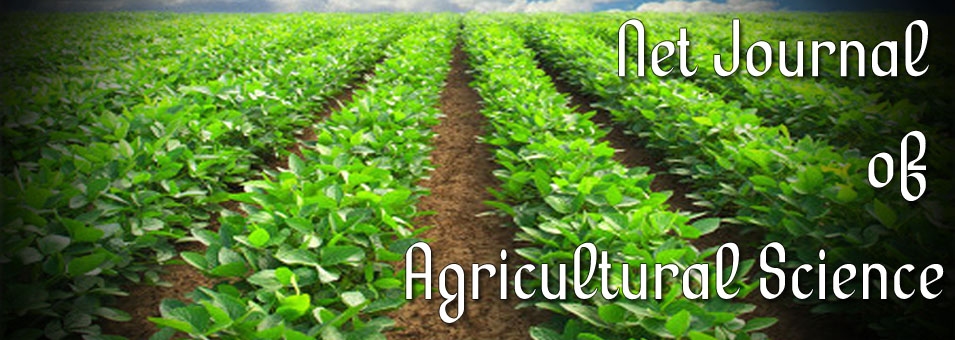Olive (Olea europea) inflorescence: A quantitative analysis of flowers differentiation among seven olive cultivars
Festus Maniriho and Mehmet Atilla AşkinNet Journal of Agricultural Science
Published: March 7 2023
Volume 11, Issue 1
Pages 13-18
ABSTRACT
The formation of flowers in sufficient number and quality is a prerequisite for a successful subsequent fruit set. However, although in Mediterranean Basin, olive trees are characterized by abundant flowering; flower differentiation after pistil abortion is followed by a very relatively low fruit set. At anthesis, a comparative study on 7 olive inflorescence cultivars was carried out by selecting 30 inflorescences per cultivar, for laboratory evaluation. Using a light microscope, the number of hermaphrodites, pistillate, and staminate were identified and counted. The inflorescence indexes including flowering rate, the average number of the various types of flowers/ inflorescence as well the percentage of inflorescence based on inflorescence flower position’s structure were computed and compared. Olive flowers appear in paniculate inflorescences with 10 to 19 flowers, and the rate of hermaphrodite flowers per inflorescence varied from 36.1 to 54.7% for Pikual and Yerli cultivars, respectively. The research revealed that although the number of flowers and their respective distribution on the inflorescences varies widely from each cultivar, there are clustered into three main inflorescence structures (or classes). However, those structures are not significantly correlated or determinants of the proportion of the 3 types of flowers (hermaphrodite, pistillate, staminate). The olive flower differentiation results in a variable proportion of hermaphrodite, pistillate and staminate among olive cultivars, and this variability is not related to inflorescence indexes. There is a need to make further investigations on pollination and fruit formation development abnormalities in order to understand the low fruit setting in olive trees.
Keywords: Anthesis, hermaphrodite, inflorescence, olive flowers, pistillate, staminate.
Full Text PDF
ISSN: 2315-9766
